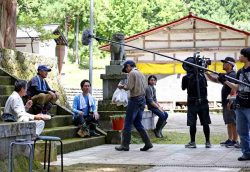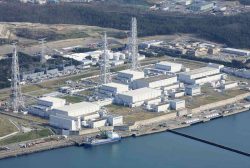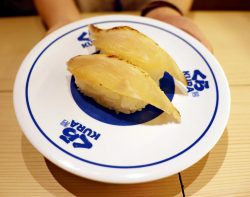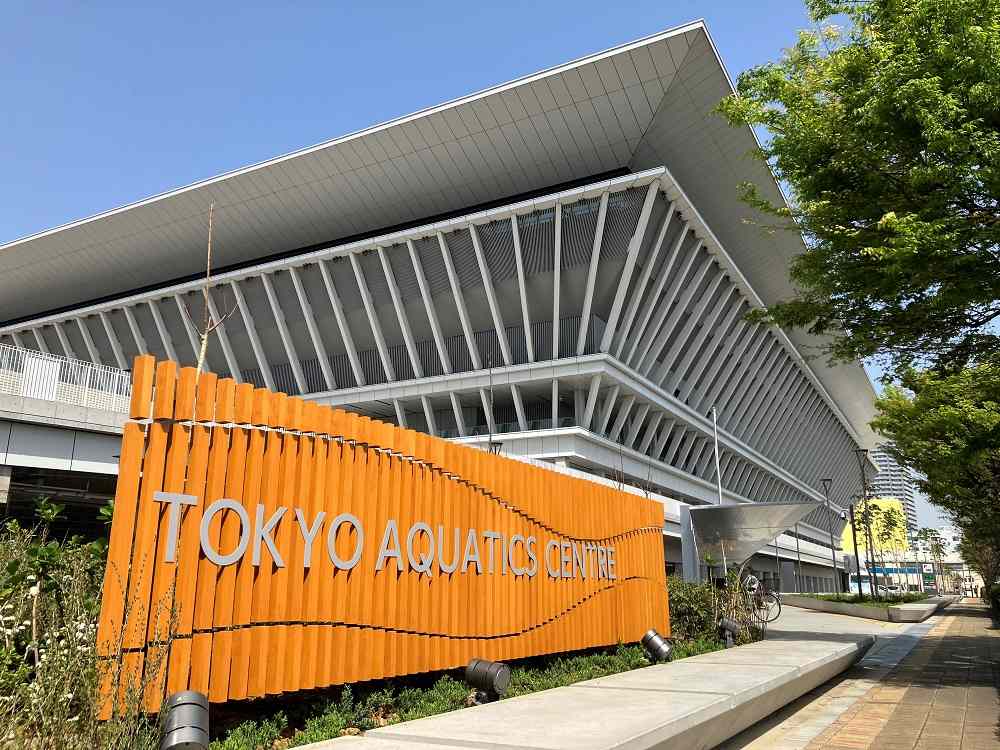
The Tokyo Aquatics Centre in Tokyo.
20:47 JST, July 22, 2023
At certain historic sites in the greater Tokyo area, proper visitor attire consists of a swimsuit, cap and goggles. That’s because public swimming pools can have more than just literal depths.
Japan’s earliest known international swimming competition was held in 1898 in Yokohama, according to the book “Why We Swim,” by Bonnie Tsui. In two of the three races, the home team beat a combined foreign squad that included Australia, Britain and the United States.
The ripples from that event have continued to spread, right up through the Tokyo Olympics and Paralympics in 2021. Along the way, many world records have been set in pools where you can swim this summer.
Here are a few where I’ve tested the waters for you.
‘The big stage’
Japanese swimmer Yui Ohashi is among those who have called the Olympics “the big stage.” At the latest Tokyo Games, she became the first Japanese woman to win two gold medals in one Summer Olympics when she finished first in the 200-meter and 400-meter individual medleys. In those events, one must swim the four major strokes — butterfly, backstroke, breaststroke and freestyle — in rapid succession.
Now you can swim where she did, at the Tokyo Aquatics Centre (TAC) in Koto Ward. Adult admission is ¥700, but there is also a free “memorial gallery” of Japanese Olympic memorabilia. It includes a racing suit autographed by Ohashi, and some rainbow-sherbet outfits worn by artistic (or synchronized) swimmers.
The 10-lane main pool is a big stage indeed. It’s 50 meters long and 25 meters wide, next to a 25-meter-square diving well with platforms ranging up to 10 meters tall. Spreading out above it all is stadium-style seating for 5,000 spectators.
In this pool, Caeleb Dressel of the United States won five gold medals, the most of any athlete at the latest Tokyo Olympics. And in the Paralympics, blind swimmer Keiichi Kimura was one of three Japanese athletes to win gold here.
Dressel’s performance included one-quarter of the credit for a world record in the men’s 400-meter medley relay. Data from the website of World Aquatics (swimming’s international governing body, formerly known as FINA) show that Dressel and his teammates — Michael Andrew, Zach Apple and Ryan Murphy — were the latest in a long line of American squads to set world records in this particular event while visiting Japan.
When I swam backstroke at the TAC recently, my view was dominated by the massive electronic scoreboard hanging ominously above. But the TAC website encourages visitors to notice the long rectangular ceiling panels, whose “origami motif” of faint creases is said to express Japaneseness. Also, the vertical lines on the building’s exterior are meant to evoke a bamboo grove.
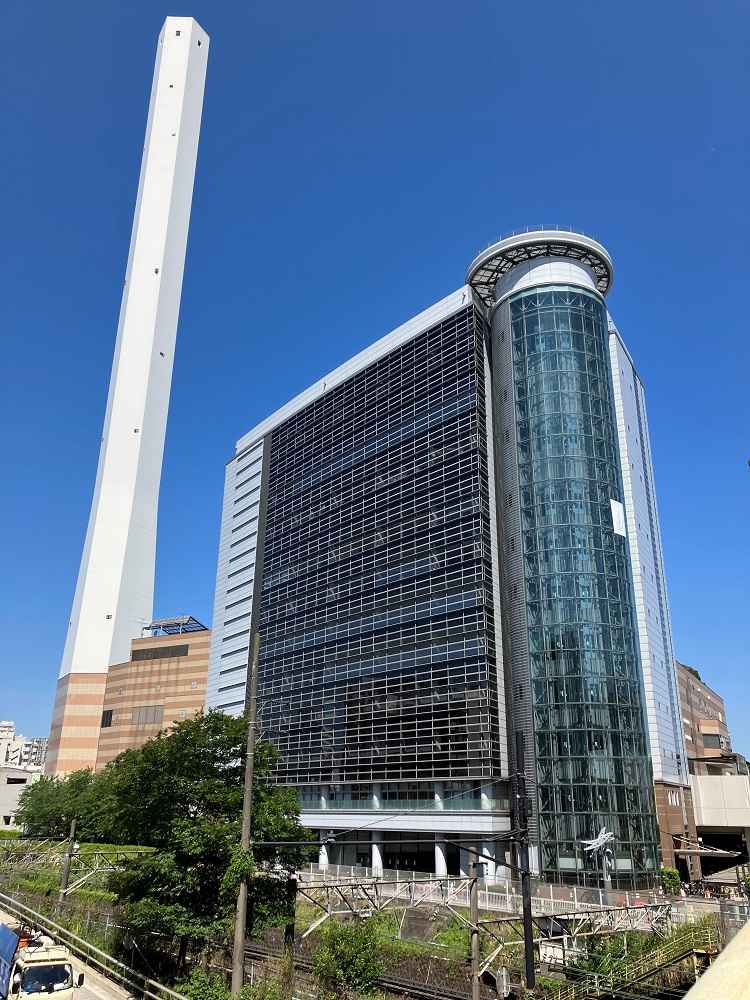
The Ikebukuro Sports Center in Toshima Ward, Tokyo
Across town at the Ikebukuro Sports Center in Toshima Ward, there’s a four-lane, 25-meter pool with a different kind of Japanese-style ceiling. It’s a long, arched skylight resembling the ones often built above shotengai shopping streets. Since the pool is on the 11th floor of a building just north of Ikebukuro Station, its large windows offer a nearly 360-degree view of the Tokyo cityscape. Not bad for ¥400 admission.
Incidentally, many Japanese pools forbid the display of tattoos. But if you do have ink, the Ikebukuro Sports Center will meet you halfway with the free loan of a rash guard (surfing shirt) to cover up.
If you prefer greener views, try the Wadabori Park Pool in Suginami Ward. Its immediate neighbor is the nearly 1,000-year-old Omiya Hachimangu Shrine, surrounded by a forest that overhangs the northern edge of the 50-meter outdoor pool’s deck. On swims here in past summers, I have heard cicadas buzzing in the trees and even sniffed the shrine’s incense on the breeze. Admission is ¥500. Due to crowding, prior reservations are recommended on weekends.
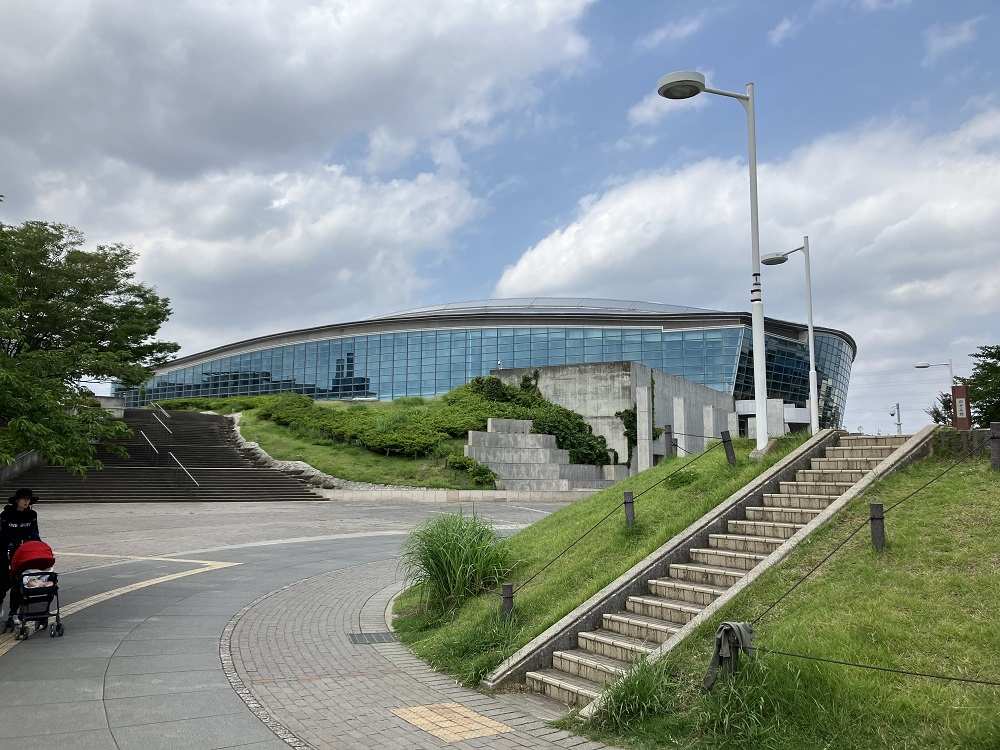
The Yokohama International Swimming Pool in Yokohama
Lanes of glory
The Yokohama International Swimming Pool, charging admission of ¥700, also offers greenery in the form of a real bamboo grove you can gaze at while sitting in a jacuzzi beside the 50-meter, 8-lane “sub pool,” which is open year-round. There is also a 50-meter, 10-lane main pool that is open now but closed in the winter.
This venue played a supporting role in the recent Tokyo Olympics, as the training camp for the British team, including “Diving Prince” Tom Daley. Autographed photos of the British Olympians are among the historical displays in the pool’s lobby, along with tributes to Japanese greats who have swum here, such as Kosuke Kitajima and Rikako Ikee.
Competitions held in this Yokohama pool include the 2002 Pan Pacific Championships, where Michael Phelps of the United States and Ian Thorpe of Australia brought international star power to the lineup. Both took part in the men’s 400-meter medley relay, with the Australians earning a silver medal and the Americans grabbing the gold — plus another of their world records in the event.
Earlier American teams to break the world record for the men’s 400-meter medley relay while visiting Japan did so at the 1985 Pan Pacific Championships and the 1964 Tokyo Olympics.
Both of those international events used the pool that originally occupied the main arena of the Yoyogi National Gymnasium, designed for the 1964 Games by major architect Kenzo Tange. That pool is gone now, but the swooping roofline of the gym itself remains a Shibuya Ward landmark.
Elsewhere in Shibuya Ward there was another pool that has now passed into memory — or perhaps legend. It was part of the Tokyo Metropolitan Gymnasium, and the scene of swimming races in the Asian Games of 1958, where Tsuyoshi Yamanaka set a world record in the men’s 400-meter freestyle. Yamanaka, who won a total of five medals across three Olympiads, later invented the low-impact sport of “aqua bowling” to help older people stay fit.
And in 1960, Satoko Tanaka set the 200-meter backstroke world record in the same pool. As an Olympian, Tanaka won only a single bronze medal (in Rome in 1960), but she earned a place in history by breaking the world record for the 200-meter backstroke no less than 10 times.
It is said that both Yamanaka and Tanaka set their records in Lane 5 of the Tokyo Metropolitan Gymnasium pool. That facility no longer exits, but in 1990 a new Tokyo Gymnasium complex designed by major architect Fumihiko Maki opened on the same site. For ¥600, you can swim in a 50-meter indoor pool with stadium seating along one side and glass windows looking onto a garden of trees and shrubs along the other. Among the greenery of the garden, you may notice a cement starting block with a bilingual plaque describing the history of the “Fifth Lane of Glory.”
The block has smooth sides and a pebbled top that must have been good to grip with bare feet. Although hidden when the shrubbery goes unpruned, there is also a large “5” on the front of the block.
There couldn’t be a more inspirational number. After all, the word for “five” in Japanese is “Go!”
Dive deeper
Opening days and hours vary. Many pools require swimming caps and frown on tattoos. Some large pools in this article have smaller pools on the same premises. Visit their websites for details.
Top Articles in JN Specialities
-

Disaster Preparedness / Apartment Management Associations: Instructions on What to Do in the Event of Power Outage
-

The Japan News / Weekly Edition (1/9-1/15)
-

Kawasaki Releases Guide to Sheltering at Home During Disasters, with Essential Tips for Apartment Residents
-

The Japan News / Weekly Edition (1/16-1/22)
-

The Japan News / Weekly Edition (12/26-1/1)
JN ACCESS RANKING
-

Core Inflation in Tokyo Slows in December but Stays above BOJ Target
-

Tokyo Zoo Wolf Believed to Have Used Vegetation Growing on Wall to Climb, Escape; Animal Living Happily after Recapture
-

Univ. in Japan, Tokyo-Based Startup to Develop Satellite for Disaster Prevention Measures, Bears
-

JAL, ANA Cancel Flights During 3-day Holiday Weekend due to Blizzard
-

‘Fiercest, Most Damaging Invasive Weed’ Spreading in Rivers, Lakes in Japan, Alligator Weed Found in Numerous Locations




